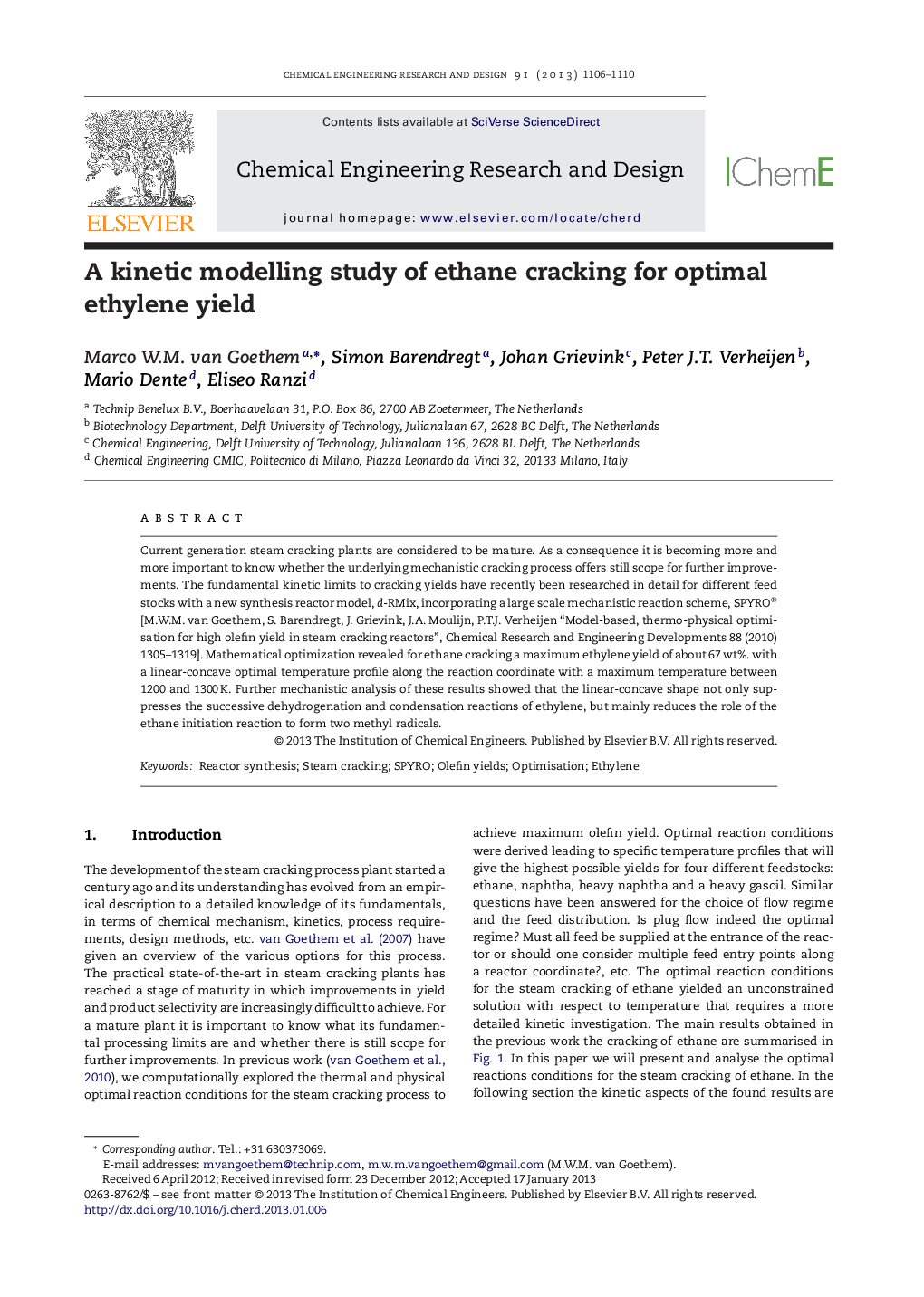| Article ID | Journal | Published Year | Pages | File Type |
|---|---|---|---|---|
| 621463 | Chemical Engineering Research and Design | 2013 | 5 Pages |
Current generation steam cracking plants are considered to be mature. As a consequence it is becoming more and more important to know whether the underlying mechanistic cracking process offers still scope for further improvements. The fundamental kinetic limits to cracking yields have recently been researched in detail for different feed stocks with a new synthesis reactor model, d-RMix, incorporating a large scale mechanistic reaction scheme, SPYRO® [M.W.M. van Goethem, S. Barendregt, J. Grievink, J.A. Moulijn, P.T.J. Verheijen “Model-based, thermo-physical optimisation for high olefin yield in steam cracking reactors”, Chemical Research and Engineering Developments 88 (2010) 1305–1319]. Mathematical optimization revealed for ethane cracking a maximum ethylene yield of about 67 wt%. with a linear-concave optimal temperature profile along the reaction coordinate with a maximum temperature between 1200 and 1300 K. Further mechanistic analysis of these results showed that the linear-concave shape not only suppresses the successive dehydrogenation and condensation reactions of ethylene, but mainly reduces the role of the ethane initiation reaction to form two methyl radicals.
► Previous work seemed to be in contradiction with conventional wisdom for the optimal reaction conditions for cracking of ethane. ► This analysis reveals that the temperature profile minimises the successive reactions of the product ethylene to larger side-products. ► The optimal temperature in the range of 1200–1300 K is a consequence of limiting the importance of the initialisation reactions. ► At temperatures of about 1400 K the four centre molecular dehydrogenation reaction and the H-abstraction of ethylene become more important.
